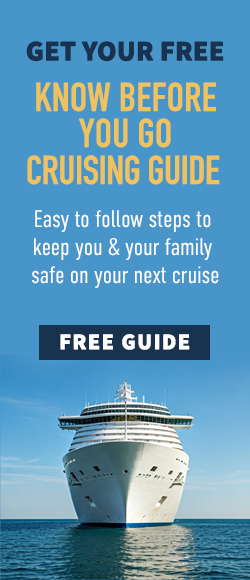By Michelle Higgins
New York Times News Service
In the wake of the Costa Concordia catastrophe Jan. 13 that killed at least 17 people, many tourists are wondering: How safe am I on a cruise?
The chance of dying in a cruise accident is small. From 2005 to 2010, about 100 million passengers took cruises, and there were 16 deaths attributed to marine accidents, according to the Cruise Lines International Association.
But the Concordia, which ran aground off the Tuscan coast of Italy a few hours after departure, has the cruise industry on the defensive.
No regulatory changes have been made, but there has been plenty of discussion about the growing size of ships and the 24-hour window after boarding in which ships must run safety drills.
At the time of the wreck, about 3,200 passengers and 1,000 crew members were aboard the Costa Concordia, a massive vessel owned by a subsidiary of Carnival Corp.
Some travel industry experts said the sheer size of the Concordia and other cruise ships might pose greater evacuation problems because of the number of passengers, but cruise officials say regulations have kept pace with the size of the ships. Evacuation routes and safety equipment, including the size and number of lifeboats, are “scaled in accordance with the increased size of the vessel,” Capt. William Wright, a senior vice president at Royal Caribbean International, said at the briefing.
There is no indication that size was a factor in the Concordia accident, but the 24-hour window for safety drills is being scrutinized. Some critics say the time frame should be shorter so passengers will be better prepared if an emergency strikes early, as it did on the Concordia.
Airplane safety announcements are made before takeoff, but cruise drills aren’t required before the ship leaves the dock. Some Concordia passengers had been through the drill, but nearly 700 passengers who joined the ship in Civitavecchia had not. The next drill was scheduled for the next day.
The Carnival Corp. said it would conduct “a comprehensive audit and review” of safety procedures, but at least one other cruise line, Prestige Cruise Holdings, the parent of Oceania Cruises and Regent Seven Seas, has announced it will hold drills on the day of departure. Previously, those drills were occasionally held the next morning.
The Concordia tragedy has focused attention on safety and operating standards, but there are other concerns that passengers should keep in mind.
Viruses: A cruise passenger is more likely to get a stomach bug than face shipwreck. Last year, there were 14 outbreaks of gastrointestinal illnesses on 10 ships, affecting hundreds of passengers, according to the Centers for Disease Control and Prevention.
Cruise companies increase cleaning and disinfecting procedures if there is an outbreak, including scouring “high-touch” areas of ships, such as banisters and elevator buttons. But such measures can’t prevent a sick passenger from infecting others. According to the CDC, the best defense is simple: Keep washing your hands, avoid shaking hands during outbreaks and use alcohol-based hand sanitizers.
Crime: Crime on cruise ships has become such an issue that in 2010, Congress passed the Cruise Vessel Security and Safety Act. The law mandates reporting of kidnappings, sexual assaults and other crimes, and requires vessels to be equipped with cabin peepholes and video surveillance systems, among other security measures.
Last year, the FBI closed 16 investigations involving crimes on cruise ships, 13 of which were sexual assaults, according to data posted online by the Coast Guard. But that doesn’t represent the total number of cases reported to the FBI, including open or pending prosecutions.
Travelers shouldn’t assume they’re safe just because they’re onboard, said maritime lawyer Charles R. Lipcon, author of Unsafe on the High Seas. A cruise might feel like a floating party, but drinking too much can compromise your judgment. “I like to tell people, don’t leave your common sense at the dock,” Lipcon said.
Fire: Modern cruise vessels are designed with smoke detectors and sprinkler systems, but fire is a risk.
Most fires start in the engine room in the lower part of the ship, said Janet Huggard, editor of Cruiseshipfires.com, a Web site dedicated to documenting blazes, explosions and other accidents on pleasure vessels, and its sibling site, Cruisebruise.com, devoted to publicizing crime, injuries and other incidents on ships. She recommends avoiding cabins below deck. “Higher is better in almost all cases for evacuation purposes,” she said.
Falling overboard: Falling overboard is rare, but last year, at least 22 people went overboard on cruise ships and passenger ferries, according to Cruisejunkie.com, which lists cases reported by the media on its Web site, including passengers who jumped. One of the requirements under the Cruise Vessel Security and Safety Act is that ships must be equipped with rails at least 42 inches above the deck, and with alarms and other technology to help signal and find passengers who go overboard.
As a general rule, pay attention to safety announcements and make sure you try on your life jacket and know where your muster or lifeboat station is. If traveling with friends or family, have a contingency plan so you know how to find one another in an evacuation.






